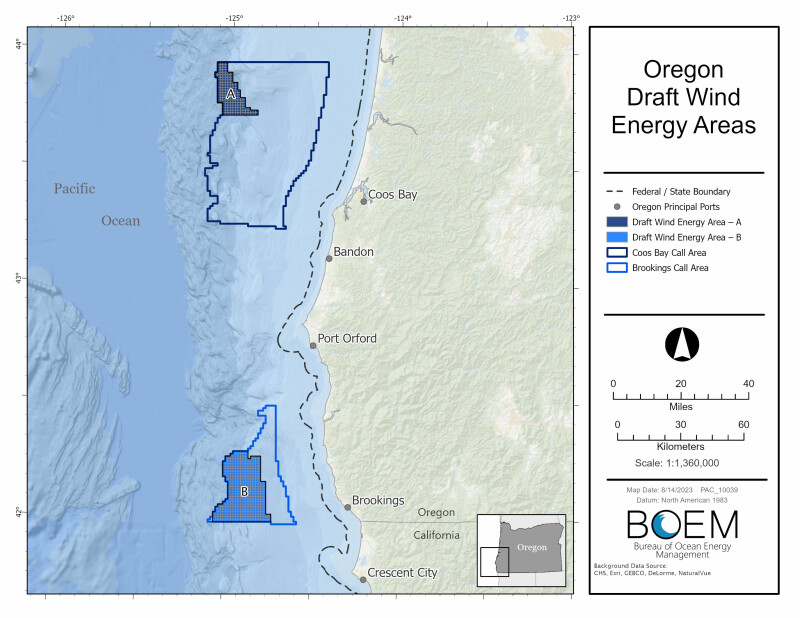Federal officials’ announcement of two draft wind energy areas off the Oregon coast poses danger to fisheries, jobs and the state’s coastal environment, the Confederated Tribes of the Coos, Lower Umpqua and Siuslaw Indians say.
The Bureau of Ocean Energy Management’s proposal “was premature and threatens fisheries, local fishing jobs, and some of Oregon pristine ocean viewsheds, some of which are sacred to the Tribe,” the confederation said in a statement issued Tuesday.
Objections coming out of Oregon are echoing those lodged against offshore wind projects off the East Coast, where local groups continue to mount fierce political and legal campaigns over anticipate impact on fishing and ocean views from coastal communities.
In months leading up to the draft wind areas release, BOEM was urged by the North Pacific Fishery Management Council, fishing advocacy groups, tribes and Oregon elected officials to pause and start its planning process over again.
The release of the offshore wind area maps “was contrary to the call of the Oregon Governor and Congressional delegation requesting that the process for wind energy development by suspended to ensure that the concerns of local residents, commercial fishing, and Tribes are fully considered in the process,” the confederated tribes said.
“The Tribe supports any green economic development project that follows the law and does not harm local fishing jobs, our environment, or Tribal cultural resources. We cannot support offshore wind development until we are provided assurance that it will do good and not harm the Tribe, its members, and the greater community,” said Tribal Council Chair Brad Kneaper.
“Last year, the Tribal Council called upon BOEM to engage in meaningful government-to government consultation with the Tribe and to take action to ensure that offshore wind energy development in any area of interest to the Tribe avoids or mitigates impacts to Tribal cultural resources to the satisfaction of the Tribe. We are not satisfied that the WEAs will do that.”
In talks with BOEM over months, the Tribe asked that areas of ocean views – “cultural viewsheds” – be excluded from the wind areas, along with areas critical to resident and migratory species, and fishing. But the simulated images produced by the agency have disappointed.
“Last week, BOEM shared its initial visual impacts assessment that demonstrates that the blades and lights from these facilities could be seen from important places along the coast both during the day and at night. This is not acceptable to the Tribe,” said Kneaper.
“The Tribe also has consistently asked the BOEM exclude important fishing areas. Fishing is an important industry on the Coast that employs tribal members and supports tribal businesses. Fish, including salmon, are also an important cultural and subsistence resource to the Tribe. Any impact to fish from wind development is going to harm our local jobs and the Tribe,” said Kneaper.
But Kneaper said the Tribe will remain engaged with BOEM and the planning process: “We plan to provide comments to BOEM on the WEAs, to provide testimony at the public hearings, and to coordinate with our local and state partners to address our concerns.”







